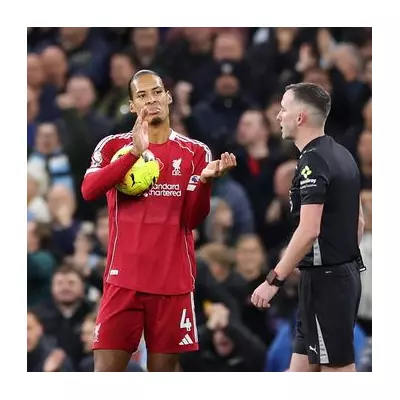
Australian cricket star Travis Head has lifted the lid on the extraordinary 'catfight' that unfolded between himself and England batsman Ben Duckett during the 2023 Ashes series, as the pair prepare to renew hostilities in the looming first Test match in Perth.
The Bizarre On-Field Exchange
The two aggressive run-scorers engaged in one of the more unusual sledging incidents in recent cricket memory, repeatedly miaowing at each other like cats during the hard-fought series that ultimately finished with two Tests apiece, allowing Australia to retain the famous urn.
Head has now broken his silence about the strange exchange, revealing it stemmed from their remarkably similar batting approaches. Both players are known for their swashbuckling styles and reluctance to leave balls passing through to the wicketkeeper.
'He started it because our leave percentages were both very low,' Head explained. 'I don't think he'd left the ball at that stage. Mine was at like, five per cent or something silly.'
Friendship Behind The Rivalry
Despite their on-field competitiveness, Head emphasised the good-natured relationship he shares with Duckett, tracing their connection back to their under-19s cricket days.
'I get along with Ducky really well, and I played under-19s all the way through with him and everything, good fella,' Head told News Corp. 'We joked about it and he left the ball, I came running in from the boundary, perfect opportunity.'
The Australian batter described how he seized the moment when Duckett unexpectedly left a delivery. 'I miaowed at him about being a cat leaving the ball. He pricked his ears up and had a giggle. And he'd do the same, vice-versa.'
Head added that both players relish these light-hearted exchanges, particularly because neither enjoys being stuck out in the field for extended periods. 'We enjoyed it, both play a similar style, both see the game in a similar way, and both just like to have fun,' he said.
Australian Team Selection Concerns
While Head's position in the starting XI for the first Test against England at Perth's Optus Stadium on November 21 appears secure, significant uncertainty surrounds two other crucial spots in the Australian lineup.
Usman Khawaja will open the batting, but his partner remains undecided. Tasmania's Jake Weatherald has earned selection in the 15-man squad for the series opener, though Marnus Labuschagne and Cameron Green are also in contention for the coveted opening position.
Notably absent from the squad is Sam Konstas, the young talent many expected would have secured the role by now. His exclusion follows a disappointing run of form since his captivating debut against India in last year's Boxing Day Test.
Australia's bowling attack faces even greater disruption after Josh Hazlewood joined captain Pat Cummins on the injured list. The paceman was officially ruled out of the first Test on Saturday, dealing a significant blow to the home side's preparations.
Further compounding selection headaches, backup seamer Sean Abbott is also unavailable after suffering a hamstring injury during the same Sheffield Shield match that ended Hazlewood's participation. This development puts Brendan Doggett in line for a surprise Test debut.
This marks the first time in nearly three years that Australia will play a Test without two of their 'Big Three' quicks - the other being Mitchell Starc - and only the second occasion since 2014 they've contested a home Test without both Cummins and Hazlewood.
However, history offers some comfort for Australian supporters, as the team emerged victorious in both of those previous matches. Michael Neser, added to the squad on Saturday as cover for Hazlewood, featured in both of those successful campaigns.
Hazlewood, who sits just five wickets shy of 300 Test scalps, missed three of the five Tests against India last summer due to separate side strain and calf injuries.
Cricket Australia released a statement explaining the diagnosis timeline: 'Initial scans Wednesday were clear of muscle strain, however follow-up imaging today has confirmed the injury. Early imaging can occasionally underestimate low-grade muscle injuries.'





